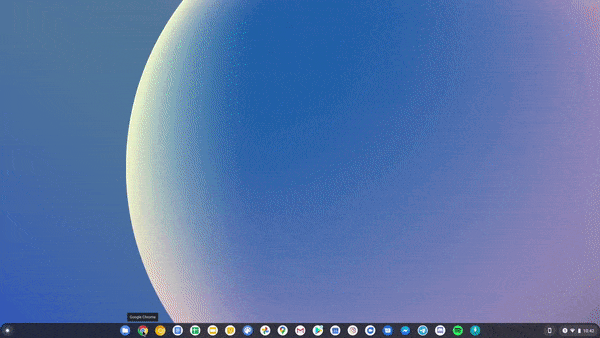Google is known for its fragmented software and hardware: as soon as manufacturers call it quits, Google has to stop the updates. A change to Chrome OS would help future Chromebooks. The Chrome browser would become a separate part.
Chrome and Chrome OS
Google Chrome and Chrome OS are two fundamentally different software packages: Google Chrome is a browser, while Chrome OS serves as its Windows (10) counterpart. Yet the two packages are close together; the Chrome browser is integrated into Chrome OS. Unfortunately, this has more disadvantages than it benefits the end-user.
Unlike Windows computers, which keep receiving updates almost indefinitely, Chrome OS is more regulated as it is with Android. It simply sets an End of Life for Chromebooks. After this EOL date, no more updates will be delivered, leaving you as a Chromebook user vulnerable to security vulnerabilities in Chrome.
Project Lacros
Depending on which Chromebook you buy and how long it has been on the market at the time of purchase, you could just receive a notification that the updates are being discontinued. Google is now working on a solution with ‘Project Lacros’, Android Police reports.
Project Lacros sounds, at least from a technical point of view, similar to Project Treble. This is a technology that Google has added from Android 8.0 Oreo to make updates faster. Before that, it split different system layers, reducing manufacturers’ work for updates. With Chrome OS, Google applies the technique in a similar way.


Treble counterpart
Note the word “ similar” as it doesn’t seem like Google wants to speed up Chrome OS updates. Instead, it splits the Chrome browser off from the operating system. In practice, this change means that users will continue to receive updates from Chromebooks after the EOL date. In these updates, Google can add new functions to the browser or fix security issues.
Chrome OS Canary
For now, the Chrome OS team is still working on the implementation of Lacros. It is still unclear how Google envisions the split between Chrome OS and Chrome. Currently, the change is visible in the latest version of Chrome OS Canary, AP said. Previously, the position was not yet operational, so it is already a step in the right direction. Still, it could be a while before Google reveals the Lacros feature to the public.























